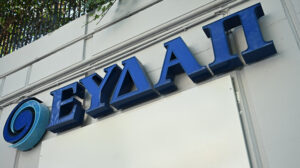Mr. Michalis Filippidis, a specialist in mastology and gynecological surgery, explains why breast cancer is a lifestyle disease, emphasizes the importance of early detection, and discusses scientific advancements promising better outcomes even for the most challenging cases.
October is dedicated to breast cancer awareness, and rightly so. Have you ever wondered why we devote an entire month to breast cancer while other diseases receive just a day of attention?
The answer to this question is also the response to the most common inquiry we receive from patients in our office: Why has the incidence of breast cancer increased so much? Unfortunately, the answer is yes. The figures are alarming. Breast cancer is the most common cancer among women, affecting not just those aged 40 to 65, as we used to see, but also younger women.
The prevalence of breast cancer demands heightened awareness from clinical doctors, researchers, pharmaceutical companies, and health ministries. That’s the bad news.
The good news is that as we increase our focus on this pathology, we understand it better, detect it earlier, and combat it with a plethora of medications and treatments. And yes, medicine is costly, and it is becoming increasingly expensive.
The second most logical question we hear in our offices is about the reasons behind the surge in new cases. Contrary to popular belief, the answer is not genetics. Breast cancers linked to genetic mutations that pass from generation to generation account for less than 10% of cases based on current scientific data. Thus, 9 out of 10 breast cancers do not stem from family genetics but rather from our lifestyle.
I often use a catchy term to explain to patients that breast cancer is a lifestyle disease. What does that mean? Let’s look in the mirror. We consume heavily processed foods, our aquifers have been damaged by intensive farming and the use of herbicides and pesticides, we inhale the toxins of air pollution if we live in urban centers, we don’t exercise, we gain weight due to increased intake, but mainly because our caloric load comes from foods that did not exist 50 years ago or, if they did, we didn’t consume them. The chemical industry and its derivatives are now everywhere; we smoke excessively, drink too much, have children at older ages, and sometimes struggle to conceive, taking medications to assist fertility. We often skip breastfeeding, take supplements recklessly, stress over the slightest issues, and daily use hormones to extend their effects after menopause.
The breast is a fatty, hormone-dependent organ that is influenced by various behaviors, and it is up to us to change some of these (that is prevention). The second crucial step is to monitor this organ (this is called early detection).
There is no reason in 2024 in Greece for any woman to skip a mammogram (unfortunately, many still do).
In recent months, I’ve heard about the contributions of preventive programs offered by the Greek state to the diagnosis of new cases. Excellent news. The reason is simple: if breast cancer is diagnosed early, it is treatable. Those of us who work with breast health understand how important specialization is for accurate diagnosis and treatment. Exams should be conducted in specialized breast centers. A standard mammogram is not enough. Often, these machines are poorly maintained, resulting in inadequate imaging. The positioning of the breast by the technologist is equally important. A key part of the process is the radiologist, who must have expertise in breast imaging. Technology is advancing.
Dense breasts – the greatest puzzle for mastology – require special handling, and there is now a new type of mammogram called tomosynthesis (3D mammography) that has been shown in recent studies to outperform standard digital mammography as a diagnostic tool.
The state must quickly recognize this and include tomosynthesis in the arsenal of clinical practitioners. Like most medical examinations, mammograms can yield errors. These errors can easily be minimized by adding palpation and ultrasound to the process. These are easy, quick, inexpensive, and effective tests that, when combined, almost eliminate false-positive results (you’ll be told you have something when you don’t) and false-negative results (you’ll be told you don’t have something when you do).
You can see the importance of organized breast centers if we genuinely want to conduct serious and scientific work. These centers will also facilitate prompt diagnosis in cases where something is found. We must refocus on the patient. Findings in the breast are distressing, and we must quickly obtain a clear diagnosis (negative or positive). This is not difficult. Such facilities exist in all advanced countries, provided there is a willingness to replicate them.
In closing, I would like to share something whispered at scientific conferences in recent years: we are convinced that in a few years, we will be able to extend the quality of life even for difficult cases. Dozens of pharmaceutical substances and medical technologies are in the final stages of study and hold great promise. I encourage you not to wait for someone else to remind you of the importance of early detection. Make it a part of your routine, and consider it a gift every year on your birthday. Now you know.
Ask me anything
Explore related questions





